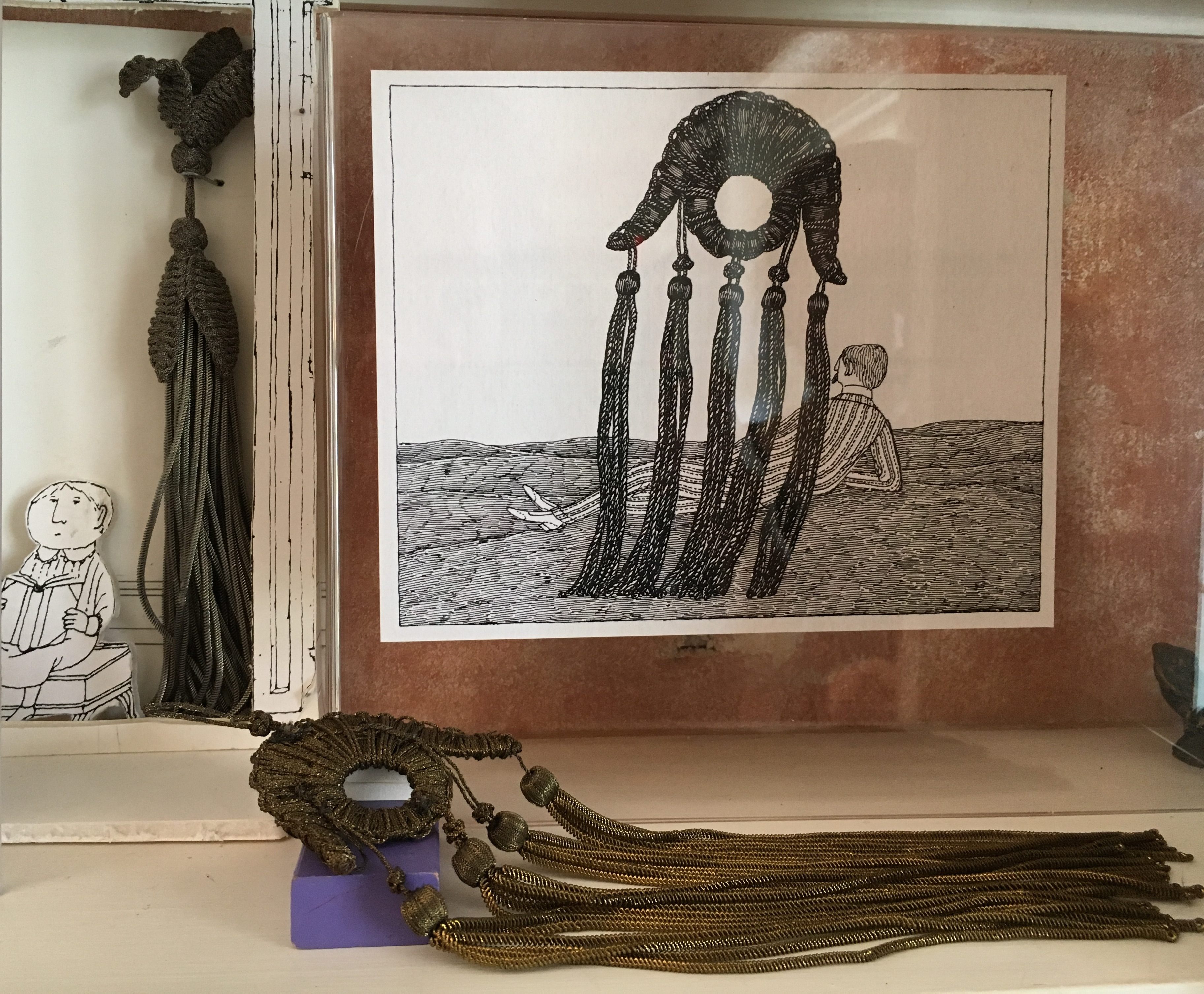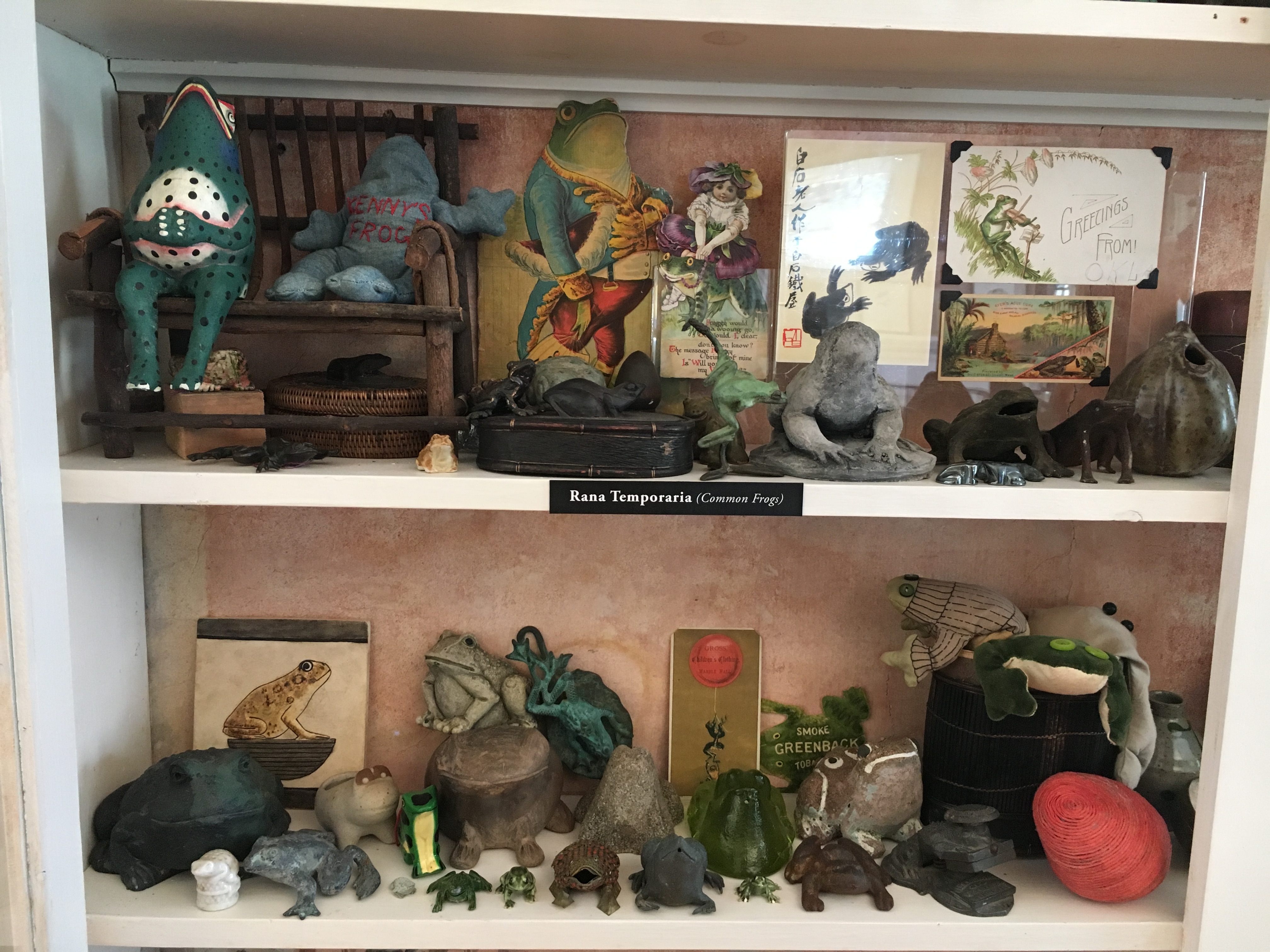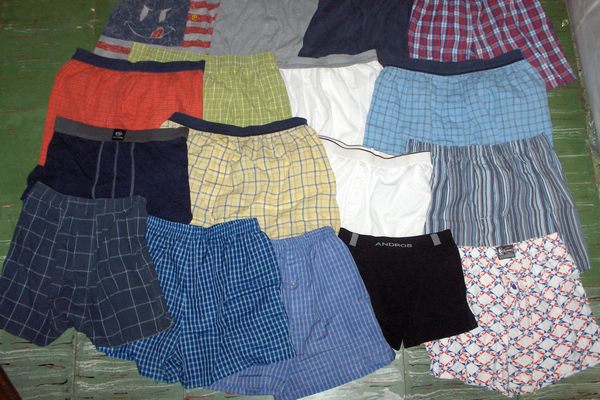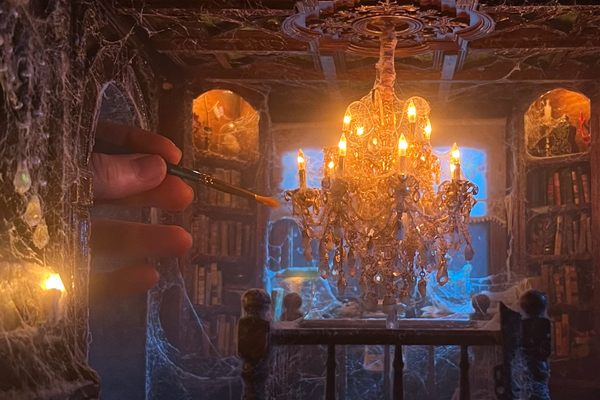Edward Gorey, Pack Rat
The famous illustrator was a devoted collector of… well, almost everything.

In 1976, Edward Gorey put out one of his trademark works of everyday dread. Called Les Passementeries Horribles, or “The Horrible Trimmings,” the book consists solely of illustrations of enormous, menacing tassels of all shapes. A velvety, tentacled clump looms over a child with a pail. A beaded braid chases a man in a wheelchair.
Twenty-four years later—just after the artist’s death—Rick Jones, the director of the Edward Gorey House in Yarmouth, Massachusetts, was poking around in the building’s garage when he found a small shoebox. He opened it up. “Bingo, it was a shoebox full of tassels,” says Gregory Hischak, the house’s curator. Now dusty and crumbling, each one corresponded with a page in the book. Gorey had held onto his inspiration, years and years after he used it.
This wasn’t unusual. When he wasn’t writing, drawing, illustrating, and designing—and even when he was—Edward Gorey was collecting. Over the course of his life, the artist gathered, and kept, everything from tarot cards to trilobites to particularly interesting cheese graters. “We ask the docents not to use the word ‘hoarder,’” says Hischak, grinning as he surveys the House’s newest exhibit, which focuses on Gorey’s pack rat tendencies. “But he really did hoard interesting things.”

Gorey was the kind of guy who, despite preferring a different brand, owned a full set of Red Rose Tea figurines. His backyard was full of stray cats, and his office was full of orbs—“the ballroom,” he called it. He had so many books, the upper floors of his house sag like hammocks. (As a result, Hischak says, rolling chairs now travel spookily from room to room, all on their own.)
In his spare moments, he would also create collectibles for others. While watching TV, he’d stitch rabbits and frogs, which he then stuffed with Uncle Ben’s rice and gave away to actor friends. At least once, he tried to strong-arm someone else into creating something just so that he could collect it: “Speaking of postcards by one who collects them madly, I feel you should have a real selection of Lizzie Borden ones,” he wrote to a dealer he often bought from. “People like me would buy every one available.”

Gorey was famous for his macabre creativity, seemingly boundless in its ability to imbue ordinary objects and situations (like tassels) with dread. But many of his best-known works gain power from the tension between imagination and organization.
In The Doubtful Guest, a Victorian family plays by all the traditional rules of politeness, although a distinctly non-traditional creature has come to call. Throughout The Gashlycrumb Tinies—which begins, immortally, “A is for Amy who fell down the stairs”—the alphabet remains comfortingly in order, even as it’s used to describe a litany of violent deaths.
Many of Gorey’s less obvious assemblages worked on a similar principle, says Hischak. Sure, any one of the dozen or so wooden potato mashers he kept might not seem inspiring—but arranged properly, they’re positively arresting, like a gathering of cult elders. Same with the salt and pepper shakers, which, in Gorey’s hands, form a patina-covered city. The artist “could find a hidden image in a variety of objects,” wrote his friend, the actor Kevin McDermott, in a book about the house. “Pliers became dragons, shears were birds in flight.”

The sheer exhaustiveness of other collections is a boon to historians and fans. For example, Gorey was a devotee of George Balanchine, the co-founder of the New York City Ballet. During his years in Manhattan, Gorey made a point of going to every single show helmed by the choreographer. (“Even if they were just doing The Nutcracker—he’d go to The Nutcracker every afternoon,” says Hischak.) The result: about 2,000 multicolored ballet tickets, as carefully kept as they are carelessly ripped in half.
Gorey also recorded every episode of his favorite television shows—Star Trek: The Next Generation, The X-Files, Buffy the Vampire Slayer. (The House has 19 boxes full of VHS tapes, each cassette labeled in Gorey’s spidery handwriting.) When he started a book, he wrote the date on the endpaper; he did the same thing when he finished.

He kept receipts from a month’s worth of lunches at his favorite local restaurant, stuck them together, and framed the resulting collage on the wall of his kitchen. “You could make one giant Excel document and say, ‘On this day, Edward worked on this, and he read this, and he watched this,’” says Hischak.
At least once, Gorey’s hoarding tendencies even got him in trouble with the law. In the 1950s, he bought a mummy’s head at an antique shop. Rather than displaying it right away, he decided to hang onto it for later use, leaving it in its brown paper wrapping on the top shelf of a closet. Decades later, when his friends helped him move his belongings to the Cape, they left it there.

The superintendent soon discovered the head, and Gorey got a call from an NYPD detective. “He said, ‘Mr. Gorey we’ve discovered a head in your closet,’” Gorey later recalled. “And I said, ‘Oh for God’s sake, can’t you tell a mummy’s head? It’s a thousand years old! Good grief, did you think it took place over the weekend?’”
The head was never returned to Gorey. But the House still has the other half of that particular collection—a mummy’s hand, wrapped in old cloth and holding a large, glassy jewel. Gorey drew it a couple of times, and Hischak has placed the hand in a display case in front of one of its own portraits, in which various well-dressed people gather around, staring at it—a situation Gorey must have found himself in quite often.
Now, guests stare only with reverence—at the hand, the cheese graters, the postcards, the frogs, and all the rest.
You can visit the Edward Gorey House on Obscura Day, May 6, 2017, and comb through the illustrator’s mirthful, macabre collections yourself.











































Follow us on Twitter to get the latest on the world's hidden wonders.
Like us on Facebook to get the latest on the world's hidden wonders.
Follow us on Twitter Like us on Facebook